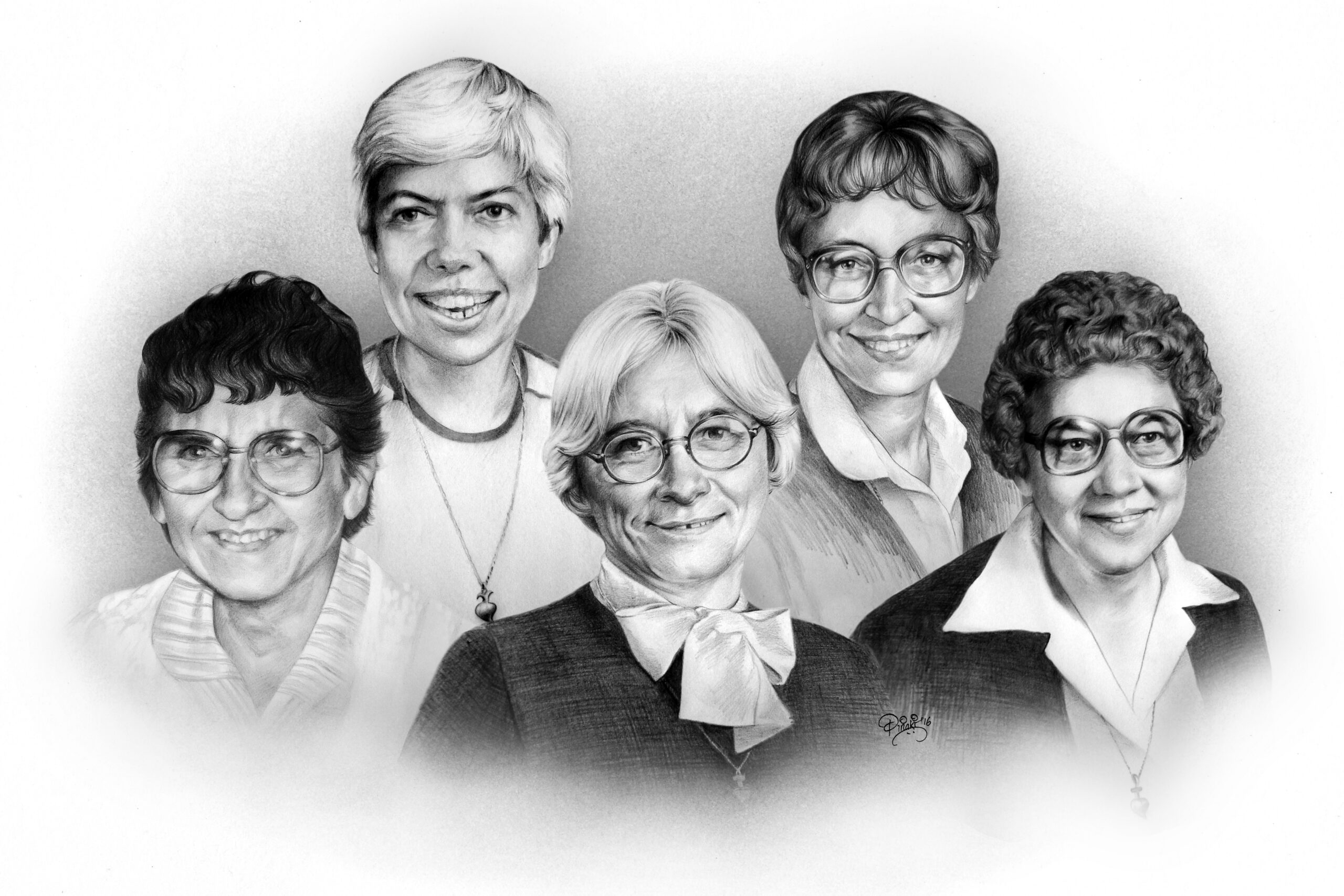
Heading to Liberia
We were called to serve in Liberia thanks to a persistent missionary priest whose urgent appeal won our hearts. In 1969, after being turned down by other orders of religious women, the priest approached our provincial leader in Ruma, Illinois, and invited us to work in Liberia, in west Africa. Our community agreed and the first group of us left in 1971. Over time, we would staff schools, parishes, clinics, and hospitals. Our sisters in Liberia fell in love with the people and served for more than 20 years despite civil unrest and other challenges.
A civil war in Liberia made daily life increasingly dangerous. In 1991, five sisters based in Liberia returned to the States briefly out of concern for their safety, but followed their hearts back to Liberia the following year.
Everything changed in October 1992 when the five were murdered.
On October 20, Sisters Barbara Ann Muttra and Mary Joel Kolmer were ambushed and killed by gunmen along a dirt road they traveled to return a worker to his home.
Three days later, on October 23, soldiers shot and killed Sisters Kathleen McGuire, Agnes Mueller, and Shirley Kolmer in front of their convent in Gardnersville. Other occupants in the house fled to tell the bishop in Bonga, Bomi County, Liberia. Official news of the horror wouldn’t reach sisters in Ruma, Illinois, until October 31.
We remember our sisters as martyrs radically committed to their ministry. Their lives and martyrdom have left an indelible mark on us.
Sister Barbara Ann Muttra, ASC
“Well, it is two years now that the war started and it looks as if (Liberian guerilla fighter Charles) Taylor will not give up his land of fortune, between carrying buckets of diamonds and gold out of the country, also all the timber.”
Sister Barbara Ann Muttra, ASC
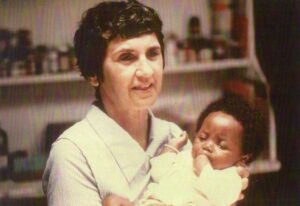
Barbara Ann Muttra was petite and feisty, the youngest of seven children who had her widowed mother’s grit, independence and sense of adventure. As a teenager in Springfield, Illinois, she volunteered at a camp for orphans.
After nursing school, advanced training in surgical nursing, and jobs in hospitals, an orphanage and a nursing home, she signed up with Catholic Relief Services, which needed nurses at the height of the Vietnam War. She served from 1968 to 1971, working with orphans, shuttling food and medicine by boat to thousands of refugees, and picking shrapnel from bodies in the operating room.
Before she left Vietnam, she had signed up for the Adorers’ mission in Liberia, where she ran clinics, trained midwives and health care workers, and improved the infant mortality rate. Her trademark smiley-face next to her signature on letters reflected her eternal optimism.
Of all the Adorers who went to Liberia, Barbara Ann stayed the longest — 21 years, from 1971 until her murder, at age 69, on October 20, 1992 on the road between Gardnersville and Barnersville, Liberia.
Sister Shirley Kolmer, ASC
“Perhaps we will come to see the day when everyone recognizes that we all inherit the earth and we can allow each person, each people to claim their rightful inheritance.”
Sister Shirley Kolmer, ASC
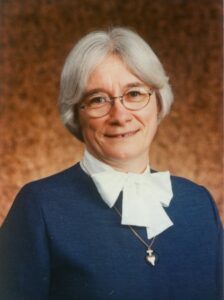
Shirley Kolmer was only a teenager when she left her family farm in southern Illinois for the convent in Ruma. Religious life was her ticket to an education and the world beyond. She taught at Saint Louis University, then left on a Fulbright scholarship to teach young women in Liberia.
She left for a stint as Province Leader at Ruma, but was eager to return to her work in Liberia. Her niece, Diane Kolmer, recalls their last time together in November 1991 during a visit to the U.S.: a happy evening of dinner, a few beers and lots of laughs. She was murdered less than a year later, at age 61, on October 23, 1992, outside of the sisters’ residence in Gardnersville, Liberia.
Sister Mary Joel Kolmer, ASC
“Making this moment the best we can is the way life goes best. We’ve got to share with our whole body as well as our soul when we do something, and that is the difference between being alive or dead.”
Sister Mary Joel Kolmer, ASC
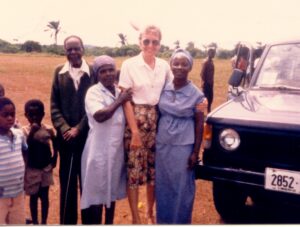
Shirley Kolmer’s cousin, Mary Joel Kolmer, from Waterloo, Illinois, spent 25 years in the classroom before heading to Liberia in 1982. When the sisters began taking in young Liberian women who were contemplating religious life, Mary Joel became their teacher, mentor, spiritual director, and den mother. She was funny, played guitar, sang, danced and sketched art work. The young women loved her.
She gave 10 years to Liberia before she was killed by gunmen in an ambush on October 20, 1992. Mary Joel was 58.
One of the aspirants, now living in the States, says she will always be grateful for the Adorers’ influence in her life. She says she tries to live her life in a way that honors them and continues their legacy of kindness, love and caring.
Sister Agnes Mueller, ASC
“I’m glad that I came. There have been learnings in pain, vulnerability and suffering, which I probably would not have allowed myself to experience in another place and culture. This may be the most growthful time of my existence because it is the lives of my sisters and brothers that now have highest priority.”
Sister Agnes Mueller, ASC
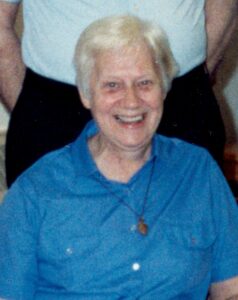
Agnes Mueller grew up during the Depression, the fifth of nine children. From the family home, it was an easy walk to the Adorers’ residence at their parish school in Bartelso. She visited frequently, so no one was surprised when Agnes said she wanted to become a sister. She yearned to become a missionary and wondered if the Adorers could provide that opportunity. She joined anyway and became a nurse, spending 15 years in the ministry. But it wasn’t enough.
She hungered for more and kept searching. She studied theology, did parish work, and cared for her aging mother. Six months after her mom’s death, in 1987, she left for Liberia.
She found her most fulfilling ministry there, helping Liberian women become more financially independent and bringing them more fully into the church. She started with the basics: teaching them to read.
She taught other classes, worked in a clinic and met with young women interested in spirituality. She was shot to death with two of her sisters on October 23, 1992, outside of the sisters’ residence in Gardnersville, Liberia. She was 62.
Sister Kathleen McGuire, ASC
“Never before have I felt I was supposed to be there. Now I believe I am supposed to go. I believe we need to move to the call of our mission, not to the call of our comfort.”
Sister Kathleen McGuire, ASC
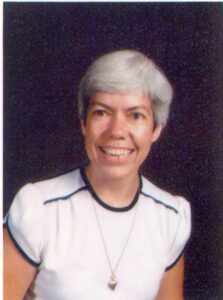
Kathleen McGuire grew up in the rural farming village of Ridgway, Illinois, in a family of five kids, and knew by age 6 that she wanted to be a sister. After eighth grade, she enrolled in the Adorers’ convent boarding school at Ruma and later joined the community.
Initially, she followed the traditional sister path of classroom teacher and principal. Later, she became ardent about social justice and led justice initiatives for the former Ruma Province. In the mid-1980s, she presented and facilitated her Ruma sisters in a critical vote whether to break the law and offer sanctuary to refugees fleeing wars in Central America. They voted yes and took in several families along the migration path to safety.
Kathleen studied Spanish and was preparing for a ministry in Central America, but her friend and mentor, Shirley Kolmer, was calling her to Liberia instead. She spent the last 14 months of her life there, keeping house and records, and teaching. She was the youngest of the five missionaries, and the first to be shot to death on October 23, 1992, outside of the sisters’ residence in Gardnersville, Liberia. She was 54.
25 Years Onward
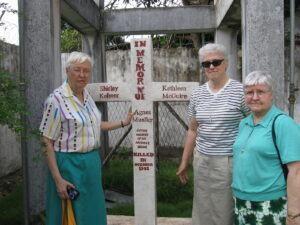
After our sisters became martyrs, our ministry in Liberia abruptly ended. We took time to grieve our loss, reflect on their lives and ponder the meaning of it all. The process took years.
Authorities pursued investigations into their killing. Pope John Paul II declared the five Martyrs of Charity. A sculpture of the martyrs was dedicated at Ruma. In Liberia, clinics, schools, and babies were named for the Martyrs of Charity.
It wasn’t until 2008 that our relationship with Liberia was rekindled. Three of our sisters, including two who had served in Liberia, visited and reconnected with associates and friends. Their message: “We’re not angry. We forgive.” In turn, Liberians invited Adorers to return, saying “this will always be your home.”
Sister Raphael Drone, one of our first missionaries to Liberia in 1971, returned in 2010-12, and again briefly in 2014, but had to pull out because of an Ebola virus outbreak.
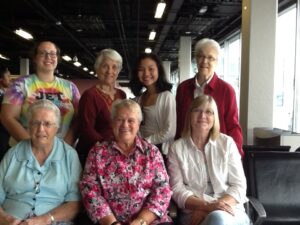
In 2017, we marked the 25th anniversary of the martyrs’ deaths by sending a small delegation of former missionaries, associates and Newman University students to visit.
Sister Therese Wetta was in that delegation and the following year, following in the footsteps of the martyrs, she joined Sister Zita Resch of Schaan for a two-year commitment in Grand Cess, Liberia. Zita taught women to sew and bake bread, and tended to the poor in hospitals. Therese taught English and religion to junior high students, tutored in phonics and reading, and revived a library that had been neglected for 20 years. Their assignment in Liberia ended in 2020 but we continue to stay connected to Liberia’s people and needs.